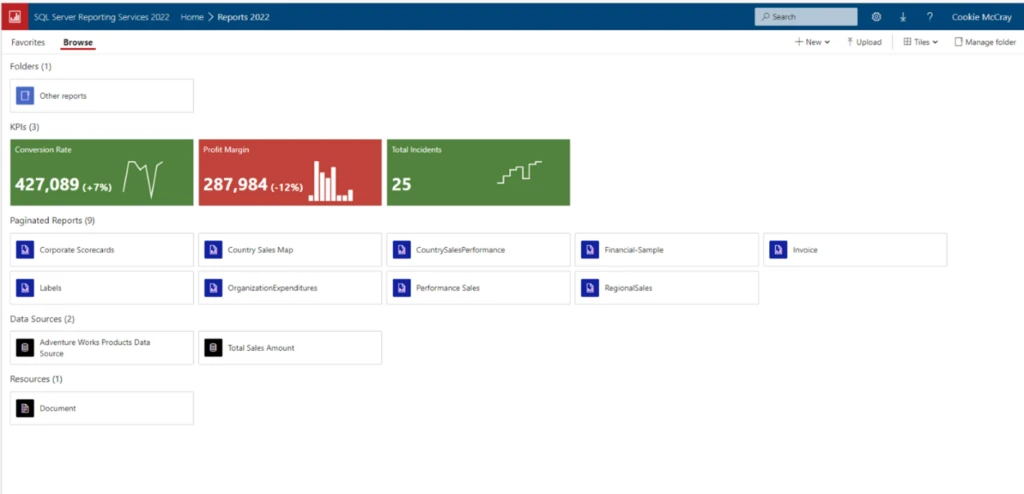Get more out of SQL Server Reporting Services 2022 with an improved user experience
Part of the SQL Server 2022 blog series.
SQL Server 2022 introduces the new SQL Server 2022 Reporting Services (SSRS).
Overview
At Microsoft, we understand the power of technology, and that is why we continue to innovate, create, and design in a way that gives everyone the ability to achieve more. Designing for inclusivity opens our experiences and reflects how people adapt to the world around them. In this new release of SSRS, we have done significant accessibility work to make sure we are empowering people to achieve more. This includes:
- Enhanced Windows Narrator1 support for the new Windows OS (Operating Systems) and Windows Server.
- Security enhancements.
- Browser performance improvements with Angular.
- Accessibility bug fixes.
- Support for SQL Server 2022 instances report server catalog2.
- Reliability updates.
- Windows Narrator lets you use your PC without a mouse to complete common tasks if you’re blind or have low vision. It reads and interacts with things on the screen, like text and buttons. Use Narrator to read and write email, browse the internet, and work with documents.
- SQL Server Reporting Services native mode uses two SQL Server relational databases to store report server metadata and objects. One database is used for primary storage, and the second one stores temporary data. The databases are created together and bound by name. With a default SQL Server instance, the databases are named reportserver and reportservertempdb. Collectively, the two databases are called the report server database or report server catalog.
Refreshed Portal
In addition to the above updates, the SSRS portal was improved to provide a more inclusive modern graphical interface making it easier to deliver meaningful reporting on your data from a web-based experience. In the portal, you can view reports, KPIs, and navigate through the elements in your report server instance. You can also use the web portal to administer a single report server instance.
The web portal is used only for a report server that runs in native mode. Some web portal features are only available in specified editions of SQL Server. For more information, see Reporting Services Features supported by the Editions of SQL Server.

Reminder of features being removed with the next release of SQL Server
Back in 2020, we announced the deprecation of Report Server features Pin to Power BI, Mobile Reports, and Mobile Report Publisher. These features will be removed from versions of SQL Server starting with SQL Server 2022 and will no longer be supported. Only the last three releases, SQL Server 2016, SQL Server 2017, and SQL Server 2019, will be supported in maintenance mode until EOL (End of Life) for existing customers.
When we mark a feature as deprecated, it means:
- The feature is in maintenance mode only. We’ll make no new changes, including changes related to interoperability with new features.
- We strive not to remove a deprecated feature from future releases, to make upgrades easier. However, in rare situations, we may choose to permanently remove the feature from Reporting Services if it limits future innovations.
- For new development work, we don’t recommend using deprecated features.
Features removed in future versions of SQL Server
| Category Deprecated | Feature | Replacement |
| Report Server | Mobile Reports and Mobile Report Publisher | Power BI reports in Power BI Report Server offer mobile capabilities. |
| Report Server | Pin to Power BI | Paginated report support is now available directly in the Power BI service. |
Learn More
To learn more about the new SQL Server 2022 SSRS please visit our docs page at What’s new in Reporting Services – SQL Server Reporting Services (SSRS) | Microsoft Docs

